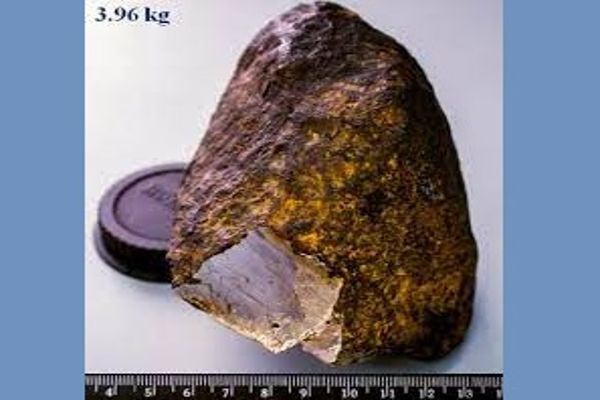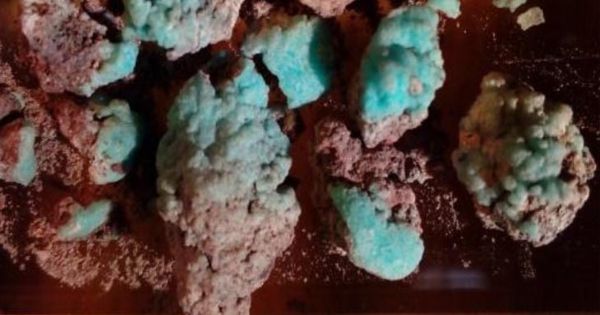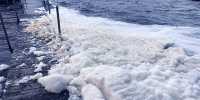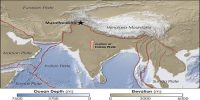A volcano in Russia has resulted in the formation of a previously unknown mineral. The mineral sulfate has been named ‘petrovite’ by the research team, and it has the chemical formula Na10CaCu2(SO4)8. The mineral was discovered in a volcanic landscape in Russia’s far east, atop the Tolbachik volcano in the Kamchatka Peninsula. Because of its volatile history, the volcano is particularly popular.
Scientists from St Petersburg University discovered an intriguing new mineral atop the Tolbachik volcanic complex in Russia’s far east, on the Kamchatka Peninsula. The mineral, known as petrovite, was published in the journal Mineralogical Magazine.
The aqua mineral was discovered nearly two decades ago, but a recent analysis revealed its composition and how strangely the atoms within the mineral are organized. Petrovite is composed of the elements oxygen, calcium, sodium, sulfur, and copper.
Scientists have discovered an intriguing new mineral atop the Tolbachik volcanic complex, located in the Kamchatka Peninsula at the very far East of Russia. The mineral, called petrovite.
The sample was discovered near the 1975 eruption’s cinder/ash cone, a structure formed by deposits from the volcano’s vent, and saved for future study. According to the study, now that the mineral has been studied, it exhibits a new type of molecular structure. In a press release, St Petersburg University’s Stanislav Filatov, who is also the lead researcher and crystallographer, stated that the “copper atom in the crystal structure of petrovite has an unusual and very rare coordination of seven oxygen atoms.”
“In the crystal structure of petrovite, the copper atom has an unusual and extremely rare coordination of seven oxygen atoms. Such coordination is found in only a few compounds, including saranchinaite, which was discovered by our colleagues at St Petersburg University – Professor Oleg Siidra’s research team,” project manager Professor Stanislav Filatov said in a statement.
Aside from a similar structure, the mineral saranchinaite has other important connections to petrovite. Because saranchinaite was discovered on Tolbachik, the researchers hypothesize that the petrovite is a byproduct of the reaction between saranchinaite, calcium sulfate, and sodium sulfate.

The team emphasizes that the proposed formation mechanism is only a hypothesis at this time, but it is one worth investigating. Understanding how such a mineral forms could have several applications in materials science.
The mineral is made up of porous frameworks, and sodium atoms can freely move between the voids. This property may make the material suitable for use as a cathode in sodium-ion batteries. Unfortunately, there are issues with the material itself, but understanding and tweaking how the mineral forms may be useful.
‘At the moment, the biggest issue for this application is the small amount of a transition metal – copper – in the mineral’s crystal structure. It could be solved in the laboratory by synthesising a compound with the same structure as petrovite,’ said Stanislav Filatov.
The Tolbachik volcanic complex is a never-ending volcano. Over 130 minerals have been discovered here, including alarsite and tolbachite.
Plosky (flat) Tolbachik and Ostry (sharp) Tolbachik are 3,085 and 3,682 meters (10,121 and 12,080 feet) tall, respectively. A major eruption occurred in the area in 1975, followed by a smaller one from November 2012 to September 2013. The last led to the formation of several lava caves.
The sample was discovered near the 1975 eruption’s cinder/ash cone, a structure formed by deposits from the volcano’s vent, and saved for future study. According to the study, now that the mineral has been studied, it exhibits a new type of molecular structure. In a press release, St Petersburg University’s Stanislav Filatov, who is also the lead researcher and crystallographer, stated that the “copper atom in the crystal structure of petrovite has an unusual and very rare coordination of seven oxygen atoms.”
















